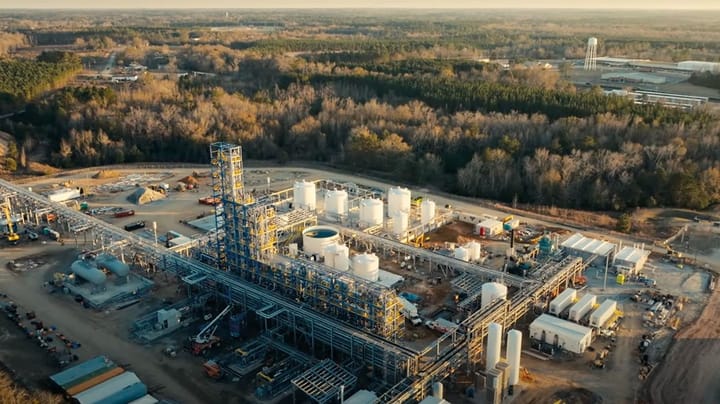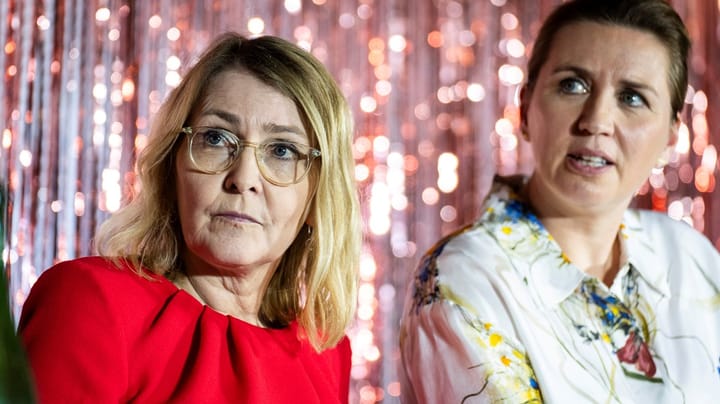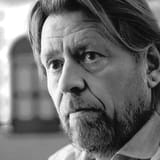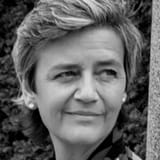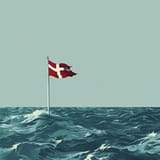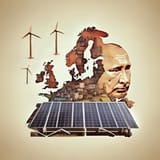The front-runners in the climate fight
Despite economic growth of 80 per cent, Denmark’s energy consumption has not grown for 30 years. This makes the country an interesting case at a time when the world is fighting to create growth without increasing CO2 emissions. Denmark’s green adventure is a story about how sharp environmental and energy duties, a political vision of making the country self-sufficient in energy, and how close cooperation between authorities, research institutions and the business community have created a lucrative innovation environment.

Bjarke Wiegand
Two key messages are repeated over and over whenever Denmark’s climate minister, Connie Hedegaard, travels around the world to promote Denmark as the host of the UN’s climate summit in Copenhagen in December; Denmark’s energy consumption has not grown for 30 years, despite an economic growth of 80 per cent. And, over a fifth of the electricity that the Danes use today comes from windmills.
Every time Hedegaard tells that story, she is met with astonished looks and applause, for both of Denmark’s achievements are unique in the world. And the combination of the two means that Denmark’s CO2 emissions are falling. See figure 1.
That makes Denmark an interesting case study at a time when the entire world is fighting tooth and claw to keep some kind of life in economic growth, while simultaneously being more and more pressurized to reduce the growth of CO2 emissions. Globally, these two figures have, up until now, developed proportionally, but the shared challenge over the next 40 years will be to reduce at least 50 per cent of the world’s CO2 emissions – in the rich countries at least 90 per cent – to avoid a global climate catastrophe.
The Danish example is not just a story of how a bunch of self-righteous environmental hippies in the ‘70s and ‘80s began to build windmills and burn biomass in small combustion plants to come closer to living in harmony with nature. It is a story of how a cocktail of tough environmental and energy taxes; an abiding political vision to make Denmark self-sufficient in terms of energy; and a close cooperation between public authorities and scientific institutions, the business community and the wider population has created a lucrative industry.
As Ditlev Engel, CEO of what is currently the world’s largest windmill manufacturer, Vestas, acknowledges: “Vestas’ success is built on the fact that some people really had the will for wind energy – both in the business world and politically. And, so, we have had some long term frames and conditions which have meant that people have also dared to invest in it.”
Vestas is very much the product of public nursing in the form of grants and special arrangements for windmill development. But, according to Engel, tough environmental standards and taxes are just as critical a part of the recipe for new, sustainable economic growth, even though they are both often overlooked and frowned upon:
“There are many places where the perception is that the higher the environmental and energy demands, the more jobs are lost. That’s completely wrong. The Danish example shows that the higher you set the bar – the more innovation you get.” See also the interview on page 71.
Energy-conscious growth story
Figur 1 | Forstør
Development in GDP, energy consumption and CO2 emmision 1990
Denmark has cracked the code for sustainable growth.
Kilde: Danish Energy Agency
The windmill CEO’s point is underscored by the fact that Denmark, despite – or perhaps because of – 30 years’ of tough environmental pol icies and high energy standards for buildings and industry, has fostered more globally-leading businesses. Among them are Rockwool, the world’s leading manufacturer of insulation materials; Danfoss, which is among the world’s leading suppliers of thermostats and district heating solutions; Novozymes, the world’s largest producer of sustainable enzyme technology; and Grundfos, which is the world master in energy-efficient pump technology.
Even the experienced chairman of the latter, Niels Due Jensen, who is happy to voice the opinion that whatever government has been in power ought to have done much more both for business life and the environment, acknowledges that the changing governments’ high environmental standards have been an advantage for Grundfos. “Tough environmental regulations have been a driver for development of clean-tech solutions and, therefore, of our success. But it is us who have risen to that challenge,” is how he sees it.
As well as global players, Danish legislation and regulation have fostered a hinterland of Danish businesses working with environmental and energy-efficient technologies. Today, over 720 Danish businesses are involved in the development of cleaner technologies in the form of wind power, soil cleansing, water technology, climate, air pollution, waste disposal, engineering consultancy, and the like. The Danish clean-tech branch employs around 120,000 people fulltime, and has a turnover of at least 320 billion kroner. Of this, exports account for 124 billion kroner, or the equivalent of 21 per cent of total Danish trade exports.
The special energy industry’s contribution to Denmark’s economy is currently developing at record speed. Since 2000 its percentage turnover has grown at nearly double the rate of the turnover of Denmark’s other industries. 63 billion kroner, or around 11 per cent, of the combined Danish trade exports is today made up of energy technology and equipment. This makes Denmark the EU’s undisputed leading exporter of energy technology in relative terms. And the latest estimates of the development of the EU15 nations’ energy technology exports show that the lead is increasing. See figure 2.
Business success as a bonus
Denmark’s extraordinary position as a clean-tech country is, however, not a product of targeted efforts to encourage business. It is instead a lucrative by-product of a sustained effort to move away from Denmark’s dependence on imported fuels – an effort that began with the oil crisis of the 1970s.
The Arabic oil boycott of the USA and Western Europe, caused by the war between Israel and Egypt/Syria in October 1973, hit Denmark like a shock-wave. The country was just getting back on its feet again when a new oil price shock arrived in 1979 in the wake of the Iranian revolution and the fall of the Shah.
At that time 98 per cent of Denmark’s energy consumption consisted of imported fuels, of which 90 per cent was oil, so when the conflict in the Middle East sent the oil price skyrocketing, Denmark ground to a halt.
Initially the social democratic government of the day pretty much panicked and initiated “car free Sundays” and asked shops to turn off their lights outside of opening hours. It prompted a year-long focus on getting Danes to think differently about energy and to save where they could.
The government was quick to acknowledge that the massive dependence on foreign fuels could be alleviated to a certain degree just by energy savings, so in 1976 it launched Denmark’s first comprehensive energy plan, which focused particularly on reducing energy consumption and the dependence on imported oil.
Europe’s clean-tech nation
Figur 2 | Forstør
Energy technology’s export share
Within a few years energy technology has become one of Denmark’s most important export areas.
Kilde: Danish Energy Industries Federation
At that time nuclear power was one option as a way out of Denmark’s dependence on oil, but the anti-nuclear pressure group “Organisationen til Oplysning om Atomkraft” (OOA – the Organisation for Information on Atomic Power) fought the plans with petitions and anti-nuclear marches and, in cooperation with the grass roots “Organisationen for Vedvarende Energi” (OVE – the Organisation for Sustainable Energy), launched an alternative energy plan which, among other things, put wind energy on the agenda.
It is these actions which, according to the professor of energy planning at Aalborg University, Henrik Lund, that were the distinctive features in the development of Denmark’s energy infrastructure. “It is the major public engagement in environmental and energy questions which has fostered a tradition for not just taking things for granted, but making the first move towards alternative energy plans. And the unique thing about Denmark is that they have actually often been listened to,” says Lund.
When the second energy crisis struck in 1979, Denmark established its first Energy Ministry. In the years after there came a long list of laws for heating and natural gas supplies, grants for sustainable energy, and energy savings in buildings. The shock after the exhausting oil crises of the ‘70s had made such a deep impression on the Danish people that the then conservative-led government continued to work towards Danish independence on oil and increased energy savings, even though the oil price dropped in the ‘80s. The funds were maintained by, among other things, keeping an artificially high oil price through taxes. This was entirely contrary to what most governments in foreign countries did during the same period and it has, according to Henrik Lund, clearly contributed to ensuring Denmark’s leading position within energy saving and sustain able energy. “It made it possible to maintain a continuity in energy policy, and finance the ambitious development of natural gas, power stations and, later, wind power, which had been targeted,” says Henrik Lund. Since then successive governments have maintained that continuity with help from even tougher regulation, green taxes, incitements to build windmills and energy saving campaigns. And, according to Henrik Lund, the main explanation for Denmark’s energy success is that the country has simultaneously targeted the expansion of an energy efficient, self-sufficient energy production alongside aggressive laws and campaigns to reduce end use of energy.
“The expansion of district heating based on the by-product from production of electricity, along with the fact that we have insulated our houses, is completely unique globally. This is the main reason that we have been able to maintain the same energy consumption despite increasing economic growth,” says Lund.
Danish strengths
The result of this bitter fight to wrestle themselves free from the oil giants’ fangs is impressive. Within 30 years Denmark has gone from being 98 per cent dependent on imported fuels to being the only EU country which is currently a net exporter of energy. A great deal of the credit should, naturally, go to the period of strong growth in the extraction of oil and gas from the North Sea but, at the same time, both energy efficiency and the other elements of sustainable energy increased at a greater rate than any other country on the planet.
The result is that the Danish economy has grown by just under 80 per cent, while energy consumption has remained constant. 20 per cent of the country’s electricity consumption is made up of sustainable energy from windmills. 60 per cent of Danish households are heated by district plants, 80 per cent of which is today surplus heat from thermal power station production. At the same time, the share of sustainable energy in the district heating sector has grown by 300 per cent in the last 30 years, to a current share of almost 50 per cent.
That infrastructure-related cocktail has generated a large number of professional and tech nological strengths which contribute to increasing economic growth in Denmark. The windmill industry alone employs almost 29,000 people in Denmark, and has a turnover of over 50 billion kroner, of which over 40 billion kroner comes from exports.
Another competence which has developed into a business bonus for Denmark is the district heating field and the combined production of electricity and heating in highly effective, decentralized thermal power stations. This structure helps make it possible to use fuels far more efficiently than in pure electricity production. At the same time, an infrastructure with many small power stations means that it is easier to accommodate the highly fluctuating electricity from sustainable energy sources. “We were forced to become leaders in this area because wind energy comprised a large part of our electricity system. Those skills we have in this area – both in the form of knowledge and technology – become an increasingly important business strength for Denmark,” says the director of the industry’s federation, DI Energibranchen, Anders Stouge.
Beyond being itself a pioneer of this kind of system thinking, Denmark’s district heating and heating from electricity generation has incubated a long list of cutting edge skills at component level, such as pumps, piping, ventilation, management technologies etc. And when it comes to all-encompassing solutions within both micro thermal power stations and major central power stations, Denmark can today count itself among the world’s elite.
“Whether you like it or not, coal will be an energy fuel for many years to come. As this is the case, it is important to ensure that the coal is utilized optimally. With this in mind Denmark has developed special competences in the construction of power stations based on a mix of clean coal technology and biomass,” says Anders Stouge.
Energy efficiency is, above all, a Danish competence which has been born from decades of focus on energy saving. Businesses such as Danfoss, Grundfos, Rockwool and, not least, the window producer Velux, very much deliver “best in class” in terms of energy efficiency within their respective product groups. And a company such as the enzyme manufacturer Novozymes has become a world-wide success by delivering products which reduce energy and water consumption in industrial processes as well as in private homes. “The sustained political environmental and energy targeting has been a good starting point for our business,” says the CEO of Novozymes, Steen Riisgaard. “All of our Danish employees have had sustainability drummed into them since birth. It is not something we as the board of the company need to make much of a song and dance about, and, of course, that’s a good starting point for a company like ours.”
Not just law-making
But all is not rosy in the green garden of Denmark. The foundation for much of the green innovation the country is benefitting greatly from today has been created over the last 30 years, but the innovation curve and the ambitious green infrastructure plans have taken a significant dive since the turn of the century. An example is the Danish windmill capacity which, in practice, has not been expanded since then. New, promising energy technologies such as heating pumps, solar energy and biogas have found it extremely difficult to make headway in the market.
Therefore, Denmark, like many other nations, finds itself in a situation where it needs to rediscover the recipe for success. One part of the solution could be to rediscover some of the mechanisms which, 30-40 years ago, were part of the initial push that led to the development of its current position of strength.
As well as this, it is important to acknowledge that Denmark’s green industry fairy tale was not just created by laws and regulation. The windmills industry is a living example of this.
It is true that the politicians have awarded some of the grants, paved the way for joint ownership and acceptance among the public, forced electricity companies to reduce power consumption, ensured fixed prices and financed ambitious expansion plans. But in California the politicians created equivalent frameworks at the same time with significant economic and industrial power behind them, yet still the Americans have had to watch Denmark run away with this major busi ness and social success in the form of the world’s leading windmill industry.
Peter Karnøe, professor of the Copenhagen Business School, has carried out thorough research to identify what made the difference. He concludes that the Americans were quite simply too professional. “They were hit by breakthrough hubris,” as Karnøe puts it.
During the birth of the windmill industry at the end of the ‘70s, and up until the mid-‘80s, there was, in particular, a decisive difference in how California and Denmark chose to work within those favorable conditions. While the Americans aimed specifically to design the perfect windmill, the Danes experimented their way for wards by whatever means available. And that turned out to be far more conducive to innovation.
In the USA, engineers and researchers started off using the country’s proud tradition of aeronautical innovation and set out to develop the optimal windmill with perfect aerodynamics. In Denmark, development took place in close cooperation between technical college engineers, smiths, electricians and designers. In the USA it was the scientists and the engineers who told the manufacturers how, in theory, the perfect mill should be produced. In Denmark a research based test station for windmills was set up at the research center Risø, with the goal of developing and refining those designs which the technical college engineers had come up with.
“In the Americans’ eyes the Danes just welded metal onto a random windmill skeleton, but even though the Danish mills were large, heavy and ugly, they worked, in contrast to the American mills which were well optimized and weighed nothing, but which nevertheless needed to be repaired after less than 100 hours of use,” says Karnøe.
Therefore he points out that an important part of the recipe for the Danish clean-tech success is that special triple helix model where businesses, authorities and scientific institutions work closely together. In that way you create public backing for the project, ensure a market for new environmentally friendly products, and the technology is anchored in a practical reality.
But while the government hesitates to lay out plans for new windmill adventures, another distinctive development in Denmark’s energy infra structure is fortunately on the way. In this way more entities, such as the energy-company energinet.dk and the Engineering Union in Denmark (IDA), have emerged with alternative energy plans which point towards new opportunities for environmental and business adventures based on Denmark’s special infrastructure. Both talk of specific efforts towards the electrification of the transport sector, alongside the expansion of intelligent electrical systems, the expansion of wind power, heating pumps and other sustainable energy and, of course, new energy efficient construction standards, as obvious target areas for Denmark. “Such a goal will, within the next 3040 years, make Denmark CO2 neutral and create a whole new, sustainable economy,” is the view of the two organizations.
Up until now the government has – as the Danes say – put the ideas “in the pickle pot” because of the finance crisis. But just as in the ‘70s, public pressure is simmering to create new momentum in the Danish society, and when the pressure becomes great enough, the government has the power to let companies, authorities, scientific institutions and the people join together in a new energy adventure.


